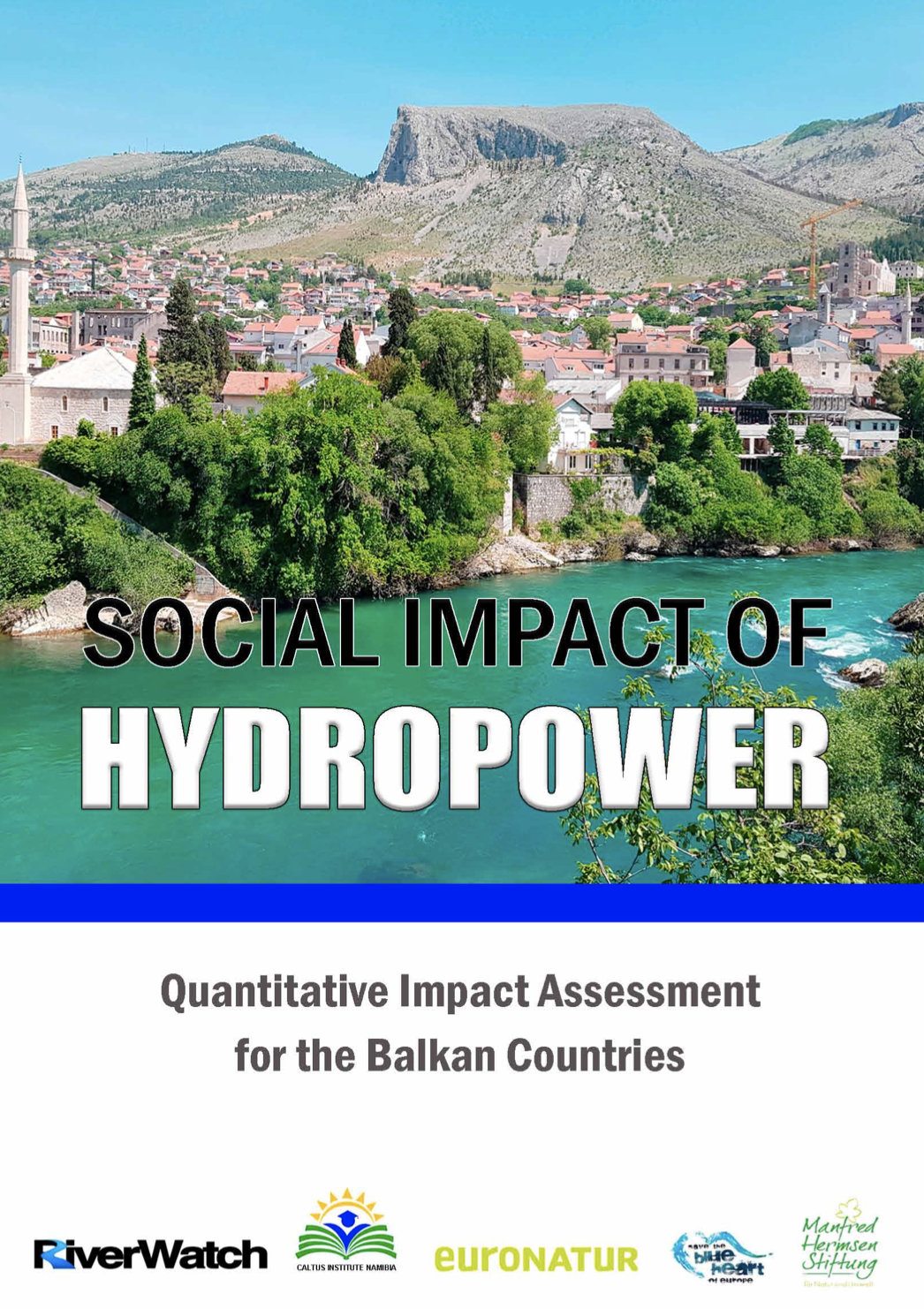 Save the Blue Heart of Europe - A campaign for the protection of Balkan Rivers
Save the Blue Heart of Europe - A campaign for the protection of Balkan Rivers
New Study: Up to 4.6 million people potentially affected by hydropower plans in the Balkans

Hydropower plants and dams have detrimental effects on river ecosystems, but they also affect people in negative ways. In a recent study, researchers from the CALTUS Institute Namibia presented a newly developed model to assess the number of people potentially affected by already operating, under construction and planned hydropower projects (HPPs) in the Balkan region.
The researchers calculated that in total, between 470,000 and 1.2 million people could be affected by currently operating hydropower projects in Albania, Bosnia & Herzegovina, Bulgaria, Croatia, Northern Greece, Kosovo, Montenegro, North Macedonia, Serbia and Slovenia – depending on the distance at which they live from the affected river stretches. The researchers further predicted that if all 3,400 HPPs currently planned and under construction in those countries go into operation, this number will increase between 3 and 10 times. This means that up to 11% of the 42 million inhabitants of the Balkan region could be affected by livelihood changes.
Numbers were also presented for select case studies: completion of the Poçem and Kalivaç HPPs in Albania could impact up to 24,000 people, and up to 1,100 people could be affected by small hydropower plants planned on the Neretvica River in Bosnia & Herzegovina.
While the smaller-scale hydropower projects predominant in the Balkans may not lead to massive human displacement, their impacts on the local population are often indirect and cumulative. Especially in rural areas, development of small hydropower can lead to reduced agricultural productivity, pressure on agricultural and forest land, or land degradation; and it affects the areas’ potential for tourism and other income opportunities. Not to forget: also the cultural value many people in the Balkans attach to their rivers is at threat.
Find the study HERE